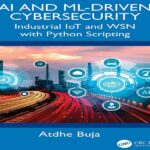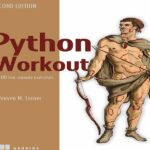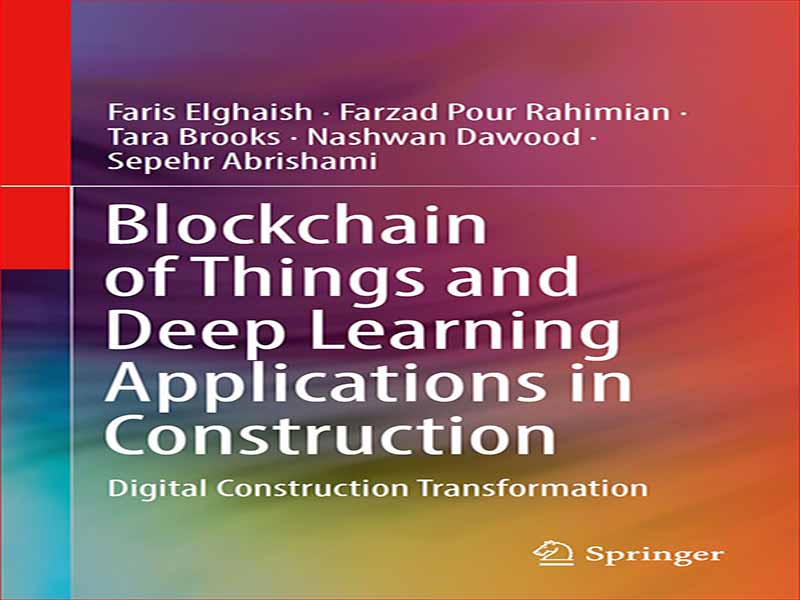- عنوان کتاب: Blockchain of Things and Deep Learning Applications in Construction / Digital Construction Transformation
- نویسنده: Faris Elghaish, Farzad Pour Rahimian
- حوزه: یادگیری ماشین, ساخت و ساز
- سال انتشار: 2022
- تعداد صفحه: 203
- زبان اصلی: انگلیسی
- نوع فایل: pdf
- حجم فایل: 8.58 مگابایت
علیرغم تأثیر قابل توجه آن بر اشتغال صنعتی (یعنی بیش از 6.6٪ سهم) و نمایندگی 9.8٪ از تولید ناخالص داخلی بریتانیا (رودز، 2019)، صنعت AEC به دلیل چندپارگی آن برای بیش از پنج دهه به طور مداوم مورد انتقاد قرار گرفته است که منجر به چندین مورد شده است. گزارش های صنعت عمده شکاف دانش بین طراحی و ساخت توسط بسیاری از مطالعات به عنوان دلیل اصلی این ناپیوستگی شناسایی شده است (ابریشمی و همکاران، 2014؛ فروچتر و همکاران، 2016؛ گولدینگ و پور رحیمیان، 2019؛ گولدینگ و همکاران، 2015؛ پور. رحیمیان و همکاران، 2008، 2019؛ رحیمیان و همکاران، 2011).
در همین حال، جهان گسترده تر (از جمله محیط ساخته شده) به دلیل ظهور انقلاب صنعت 4.0 نوعی تغییر پارادایم را تجربه می کند. پیشرفت های اخیر تکنولوژیکی و دیگر مبتنی بر فرآیند و فناوری های نوآورانه در محیط ساخته شده که در بالا ذکر شد، نقش کلیدی در این فرآیند دارند. همانطور که به طور گسترده در رسانه های عمومی و علمی گزارش شده است، 9 ستون حمایت کننده از Industry 4.0 عبارتند از (1) اینترنت اشیا، (2) داده های بزرگ، (3) واقعیت افزوده، (4) تجسم پیشرفته، VR و شبیه سازی، (5) تولید افزودنی، (6) یکپارچه سازی سیستم، (7) محاسبات ابری، (8) سیستم های خودمختار، و (9) امنیت سایبری.
Despite its significant impact on industrial employment (i.e. over 6.6% contribution) and representation of 9.8% of the UK’s Gross Domestic Product (Rhodes, 2019), the AEC industry has been continuously criticised due to its fragmentation for over five decades, resulting in several major industry reports. The knowledge gap between design and construction has been identified by many studies as a major reason for this discontinuity (Abrishami et al., 2014; Fruchter et al., 2016; Goulding & Pour Rahimian, 2019; Goulding et al., 2015; Pour Rahimian et al., 2008, 2019; Rahimian et al., 2011).
Meanwhile, the wider world (including the built environment) is experiencing a kind of paradigm shift due to the emergence of the industry 4.0 revolution. Recent technological and other process-based advances and innovative technologies in the built environment mentioned above have a key role in this process. As widely reported in the popular and scientific media, the nine pillars supporting Industry 4.0 are (1) The Internet of Things, (2) Big Data, (3) Augmented Reality, (4) Advanced Visualisation, VR and Simulation, (5) Additive Manufacturing, (6) System Integration, (7) Cloud Computing, (8) Autonomous Systems, and (9) Cybersecurity.
این کتاب را میتوانید از لینک زیر بصورت رایگان دانلود کنید:
Download: Blockchain of Things and Deep Learning Applications in Construction



































نظرات کاربران